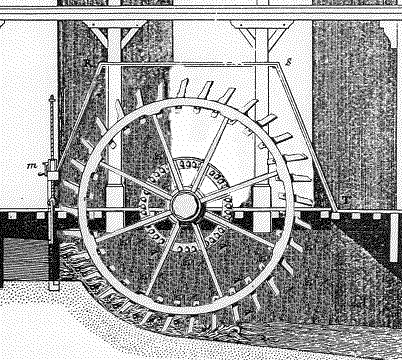 From
a state of being
From
a state of being  From
a state of being
From
a state of being
to a State of Mind:
Tools that organize reality most profoundly are often unseen and according to Pacey, the product of dreams and fine technology.
"artificial irrigation by canals and water-works the basis of Oriental agriculture and of Oriental despotism."
Karl Wittfogel
Comment upon the quote to the effect that Wittfogel is either correct or mistaken.
"Among those who have pointed to the importance of large-scale water engineering in this context, Karl Wittfogel is known for analysis of what he called 'hydraulic societies'. He stressed the very large labour force needed to construct dams and canals using hand-tools, and discussed how systems of 'corvée labour' evolved to carry out such work, with people conscripted for several weeks or months each year."
Pacey's interpretation of Karl Wittfogel's assertions.
Technology | etymology | Three spheres or facets of tools | Diversity | dates | land defined | natural | rivers | Technical terms | two roads | waterscape
Siry on Wittfogel's hypothesis
![]()
The Wittfogel hypothesis is a materialist argument.
That means he thought that matter shapes the mind and thus, is often rejected by ideological scholars who believe ideas dominate technology and not the other way around. Karl Wittfogel who taught at the University of Washington later in life authored a compelling book in 1957 on how the means of production influences, if not determines the social and economic arrangements that ultimately give rise to authoritarian rule when we look at governing a culture based on hydraulic technology. That is the use of water controlling devices to raise crops and sanitize the population leaves little room or time for people to ignore the a crucial basis of their civilization: water control.
In a simplistic sense, he argued that, with the control of water comes control of human behavior.
Water and rice as two principle shapers of landscape and settlements in southwestern China together require sophisticated water control devices.
Technology analyzed with respect to the control of people to maintain water systems in order to sustain agricultural production.
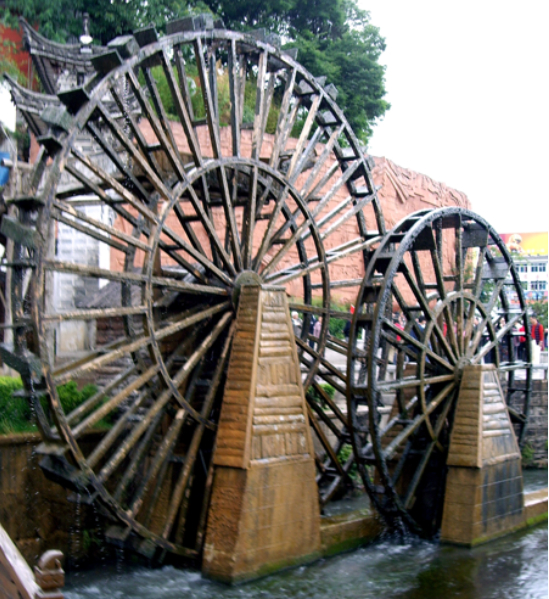
Two restored ancient Chinese water wheels were examples of how to use the mechanical power of moving water and as such they were an extension of and an invention that also promoted increased agricultural production in Asia before their introduction to Europe and later into the Americas.
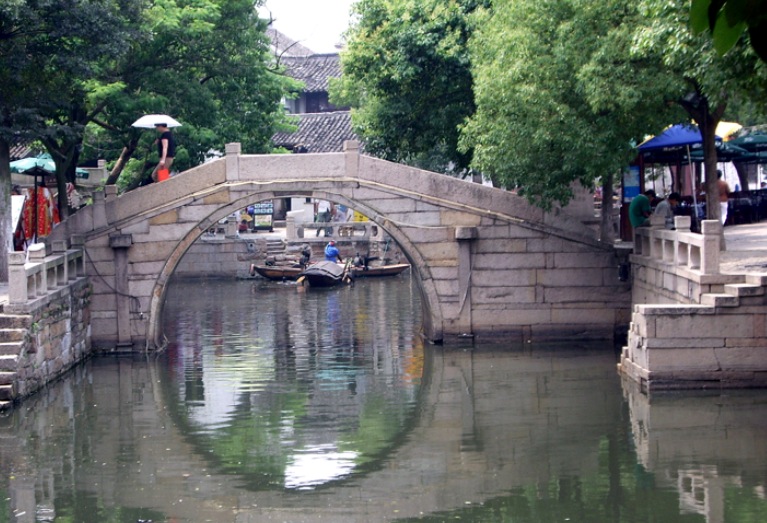
Transportation with the completion of the Grand Canal linking southern with northern China in improvements from the seventh to the thirteenth centuries, [See Pacey, p. 4] the abundant rice form the south could be used to feed the Yellow River population centers in the north.
- "The system by which a society provides its members with those things needed or desired."
- "Applied science, or the study of the practical and industrial arts."
- "Whether or not it draws on new scientific research, technology is a branch of moral philosophy, not science." Paul Goodman, New Reformation
- "Technology, in sum, is both friend and enemy." Neil Postman, Technopoly
What is technology and how do tool complexes
shape human needs?
It is no generally accepted that Wittfogel's arguments were too general and too deterministic. Rather than saying that powerful bureaucratic government arose because of the need to build large engineering works, one can equally argue that large canal projects in China and big dams in Iraq were only begun because governments had first developed the administrative capability to manage them."
". . . his theory is a useful reminder of the close relationships between technology and institutions."
Pacey, TWC, p. 18.
"The kinds of technology which any society develops must depend on its ability to mobilize labour, foster relevant skills, and to encourage innovation."
Pacey, TWC. 19.
Three related spheres of technology are:
|
Tools as artifacts | |||
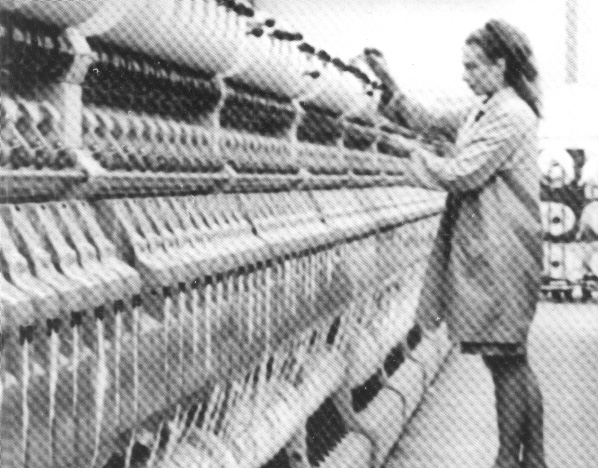 |
 |
||

| |||
| Metaphorical Aspects | |||
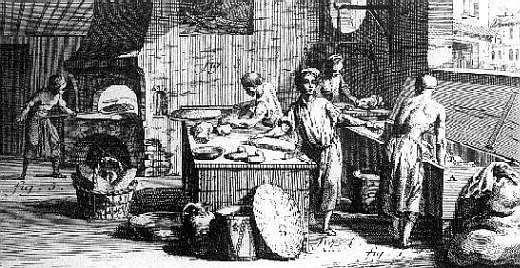 |
< |
|
|
| Work | Symbols | ||
|
labor institutions social constraints systematic relations |
"good shepherd" engines of change "dynamo of activity" "Divine watchmaker" | ||
So that by using the above three ways to describe the importance of technology, we have water moving equipment, the laborers needed with skills to employ, maintain, and improve these devices, and the Wittfogel hypothesis that argues control of water leads to a characteristic form of civilization requiring certain beliefs to support the requisite behavior to sustain ever larger numbers of people.
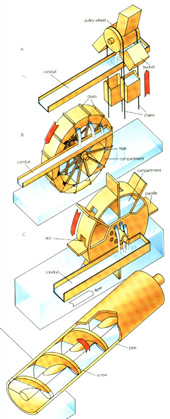
The spiral design can move water or material from one place to another when encased in a tube.
technology | origins and uses | definition | related words
technology is a combination of two Greek words
| Root 1: |
|
tekton, tekhne | to join, unite, bond, tie, skill |
| Root 2: | LOGOS, logos, logia | logos, logia | reason, ratio, ration; study of |
Examples of mortise and tenon joinery used in wood working, tekton in ancient terms referred to a carpenter, or woodworker.
This mortise and tenon joint has been used for thousands of years by woodworkers around the world to join pieces of wood, usually when the pieces are at an angle close to 90°.
Dovetailed joinery (edge of the box [above]) fits together precisely like a canal lock [below], both require skill in woodworking.
A canal lock pictured on the New York State Barge Canal regulates the flow of water from one level to another in the "Erie Canal."
The etymology of the according to the Oxford English Dictionary:
1610-15, is an early appearance of the word, technology used in an English dictionary.
1628, a discussion of the Roman baths in Bath, England uses the word with respect to the discussion of these facilities.
1706, by this time Phillips uses Technology in a title and it refers to a description of the arts, particularly the mechanical arts.
A division of labor shown in Diderot's Encyclopedia, 1751, entitled "Encyclopedia, or a Systematic Dictionary of Science, Arts, and the Trades."
1803, Jeremy Bentham uses the term in a book on judicial evidence and suggests that there are questions that arise from "technology in all its branches."
The Oxford English Dictionary, or OED defines technology: as the scientific study of the practical or industrial arts.
(page 3248, OED).
Pursell's observation and argument.
Directly Related Terms: technology
| Tekton,
|
Skill in the construction of something, the art of making useful and beautiful items. |
| Technician, |
An expert who has and demonstrates great skill of knowledge; one who has expertise. |
| Technique, |
The manner, method, way to employ, execute, finesse, or handle an effective procedure to accomplish something; a well expressed skill. The expert means or accepted practices for using tools. |
Behavior shaped by technology.
How and to what extent water sustains society?
California aqueduct used for irrigation and municipal supply.
Sacramento River is prone to floods, 1861-62, 1951, 1956, 1964, 1986, 1997, 2005.
A levee on the lower Sacramento River protects the flood plain from excessive water.
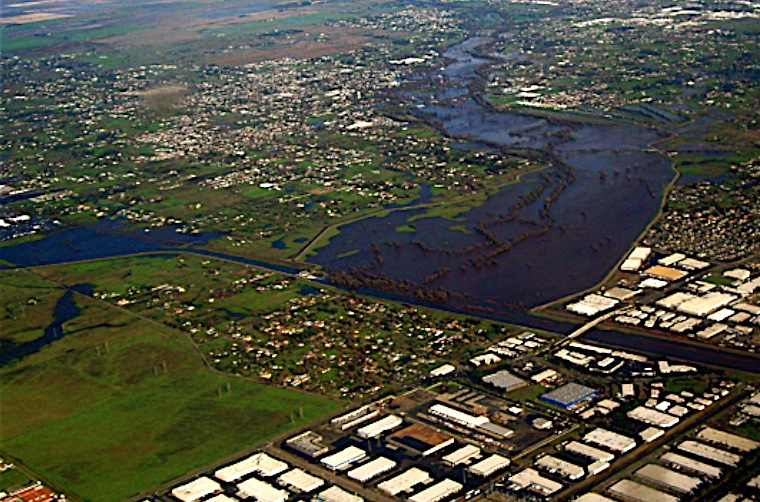
Flood waters spill over the top of these levees inundating the coastal plain along the Sacramento River, in December 31, 2005.
California like much of the western United States relies on an enormous number and extensive network of dams, canals, pumps and drains to keep water available for farms, cities, industry and electricity.
Water & society.

Indirectly related terms with respect to water and society.
waterscape -- the collection of landscape features molded by containing or influencing the movement of rain, precipitation, or bodies of water.
riparian -- referring to a stream or river bank, beside a river or tributary, streamside.
Hydraulic -- pertaining to the use of water, or water pressure as a means of operating parts or an entire complex of machines, gadgets, or implements.
Acre -- 640 for every square mile of land, an Indo-European root meaning grazing or pasturage for cows (Latin & German).
acre-foot -- 43,560 cubic feet of water; the amount needed to cover an acre, one foot deep with water.
league -- 3 miles; or 4,400 acres in the lands of the Mexican Cession (California & the SW)
Prior appropriation -- the doctrine, base on western law practices in dry areas (arid regions) that allows the use of water to be determined by precedent and not proximity to a water body.
Social justice -- the belief that fairness, equity and shared burdens form the basis of remedies in social, legal or moral disputes among people, between citizens and governing bodies, or among competing interests.
Theodore Robinson's 1893, painting of the Delaware and Hudson canal, in the French impressionist style.
Pennsylvania Academy of the Fine Arts, Port Ben, Delaware and Hudson Canal, 1893. Oil on canvas [ 8 1/4 x 32 1/4 in. (71.755 x 81.915 cm.)]. Gift of the Society of American Artists as a memorial to Theodore Robinson.
Columbia River Basin | California Water | Water
Pursell | Pacey–Meaning | Pacey | Tenner | Postman–Tech | Postman–Television | Eberhart | Snow | Kaku